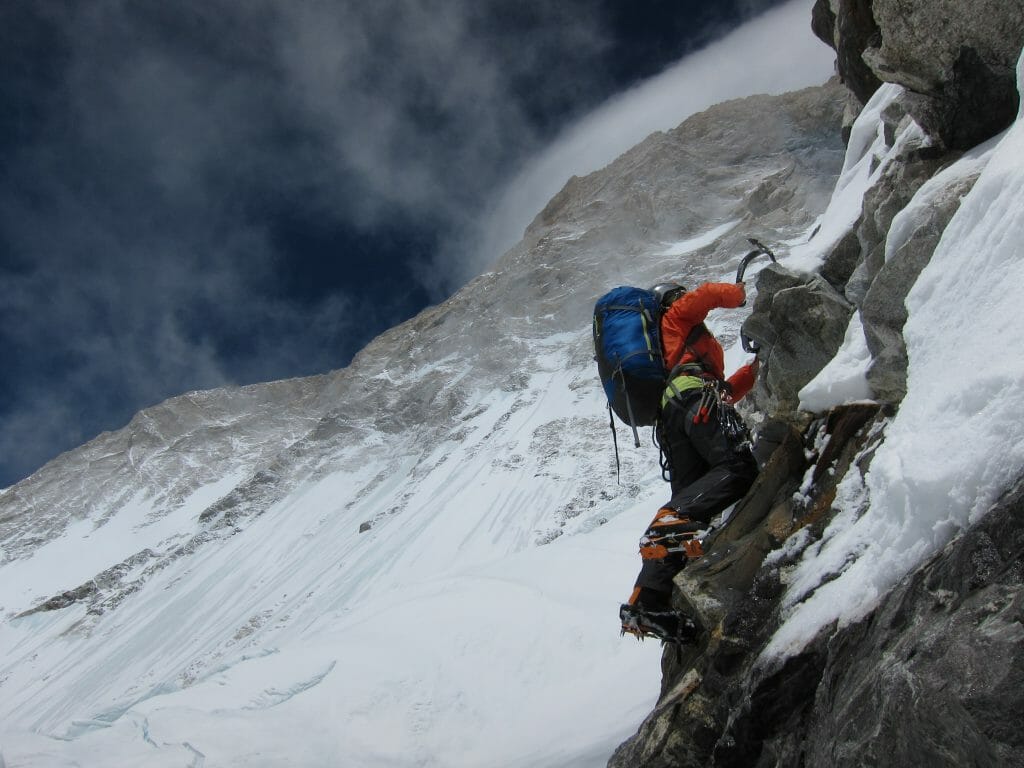I have a friend—let’s just call him John—who really wants to climb the 1938 route on the Eiger. It’s an incredible climb, and a challenging one as well. I’ve done the route myself, and can attest that to climb it requires a broad range of skills: endurance, technical climbing ability on both rock and ice, a good understanding of alpine weather and conditions, and a bit of luck. The route is well within John’s physical abilities, and although he is a little bit less experienced on the kind of M5 terrain you hit at the Crystal Crack, high on the route, I know he could get there with a little bit of practice.
But John doesn’t really like mixed climbing. So you know what he is doing to train for this climb? He’s climbing a lot of runout 5.9 in the Black Canyon. Good idea, or bad idea?
I get emails with stories like this all the time in response to Scott’s and my book Training for the New Alpinism. People are frustrated that they can’t achieve their goals, even though they feel like they’ve been training really hard.
Without trying to minimize anybody’s experience, let me say bluntly, “Don’t train harder, train smarter.” It’s a familiar maxim that I’m sure you’ve experienced firsthand in your climbing, whether it’s learning better beta on a sport climb or setting a more sustainable pace on a mountaineering route.
The problem most of us run into when we set these big climbing goals for ourselves is that we rarely take into account what achieving those goals actually entails. We think we can push hard, and that eventually all our hard work will be rewarded with results. This is rarely the case. Usually, it’s something else we didn’t even take into consideration that holds us back.
In my experience the solution is usually to bring an intellectual framework to our climbing goals, use that framework to apply established principles to our problems, and then create tangible plans to overcome them. For John, that probably means working on his mixed climbing. For a sport climber who wants to ascend El Cap, it probably means practicing aid climbing. For the ice climber who wants to climb Mont Blanc twice in a day, it probably means working on aerobic fitness.
For any climber, with any goal, there will be a unique collection of problems and weaknesses that need to be addressed to attain that goal. There’s no such thing as a one-off prescription to give to all climbers to help them achieve all climbs.
What I can say, without a doubt, is that if you want to push your climbing to new levels, and you’re currently stuck, you need to attack the problem systematically. You may be a 5.13 sport climber, but if you reach an insecure M8 pitch at the top of a long alpine route with nothing in the gas tank, you probably won’t send the route. You may be Kilian Jornet, but if you can’t climb techy granite 5.13, you’ll never free El Cap.
What we’re doing in terms of coaching and training is precisely this method of applying a broad intellectual framework to your personal climbing (or running or skimo or ski mountaineering) goals. We begin with a physical assessment, identify the weak links, and then come up with a program to work on those.
Where people get hung up with this is when it comes to sacrificing short-term climbing pleasure for long-term climbing gains. And that’s OK—I get it. If you just want to go climbing, then do that. There is absolutely, positively 100 percent nothing wrong with that. In fact, that was exactly the mentality that I brought to climbing for much of my career.
But if you don’t send your dream route, then you don’t get to complain about not being able to improve! It’s not because you have bad genetics—it’s because you don’t want to work on your weaknesses. Most of the time, this boils down to not wanting to sacrifice short-term participation for long-term improvement. Of course, working on your weaknesses doesn’t have to suck (and that’s something we work hard to make sure of at Uphill Athlete).
You might as well at least give it a try! Sit down, make a long-term plan that sacrifices some short-term fun, and clearly address the underlying issue(s) that you’re struggling with. That will make you a better athlete, and, in the long run, will bring way more satisfaction than simply patting yourself on the back every time you succeed at something you were already good at to begin with.
-by Steve House

